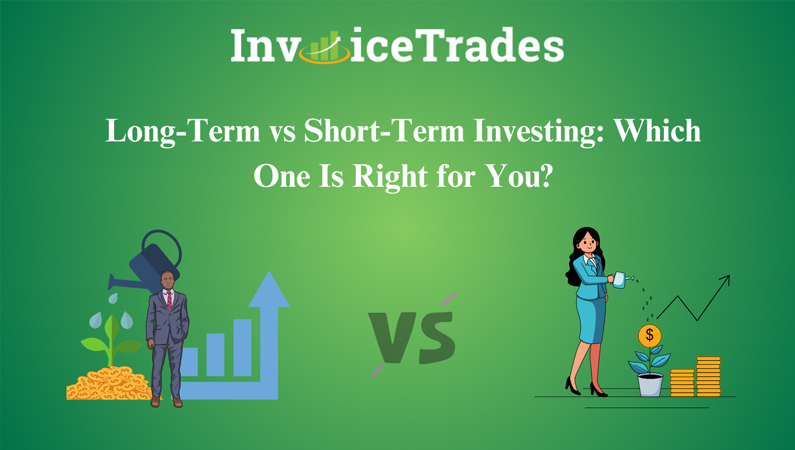Investing is a powerful tool for growing wealth, but choosing the right strategy can be challenging. The debate between long-term and short-term investing is ongoing, and each approach has its pros and cons. In this blog, we’ll explore both strategies to help you determine which one aligns with your financial goals.
What Is Long-Term Investing?
Definition
Long-term investing involves holding investments for several years or even decades, focusing on sustained growth over time.
Key Characteristics
- Holding period: 5+ years
- Focus on growth and compounding
- Lower transaction costs
Pros of Long-Term Investing
- Benefits from compound interest
- Less affected by short-term market volatility
- Potential for higher returns over time
Cons of Long-Term Investing
- Requires patience and discipline
- May take time to see significant returns
- Market risks over extended periods
What Is Short-Term Investing?
Definition
Short-term investing involves buying and selling assets within a shorter timeframe, typically within a few days, weeks, or months.
Key Characteristics
- Holding period: Less than 1 year
- Focus on quick profits
- Higher transaction costs
Pros of Short-Term Investing
- Quick returns on investment
- Flexibility to adjust strategies
- Capitalizes on market fluctuations
Cons of Short-Term Investing
- Higher risk due to market volatility
- Requires active management
- Can be time-consuming
Main Factors: While Choosing Between Long-Term and Short-Term Investing
- Financial Goals
- Long-term investing: Ideal for retirement planning, education funds, and wealth building.
- Short-term investing: Suitable for immediate financial goals like buying a car or funding a vacation.
- Risk Tolerance
- Long-term investing: Generally involves lower risk as it smooths out market fluctuations.
- Short-term investing: Riskier but can offer higher immediate returns.
- Time Commitment
- Long-term investing: Requires minimal active management.
- Short-term investing: Demands constant monitoring and quick decision-making.
Examples of Long-Term and Short-Term Investments
Long-Term Investments
- Stocks and ETFs
- Real estate
- Retirement accounts (401(k), IRA)
- Bonds
Short-Term Investments
- Forex trading
- Options and futures
- Cryptocurrencies
- High-yield savings accounts
Long-Term vs Short-Term: A Comparative Table
| Aspect |
Long-Term Investing |
Short-Term Investing |
| Holding Period |
5+ years |
Less than 1 year |
| Risk |
Lower |
Higher |
| Returns |
Potentially higher over time |
Quick but smaller returns |
| Management Effort |
Low |
High |
| Suitable For |
Retirement, wealth building |
Quick profits, short-term goals |
Which Strategy Is Right for You?
When to Choose Long-Term Investing
- You have a low-risk tolerance.
- You are planning for long-term financial goals.
- You prefer a hands-off approach.
When to Choose Short-Term Investing
- You have a high-risk tolerance.
- You are looking for quick returns.
- You can dedicate time to actively manage your investments.
Combining Both Strategies
Many investors find success by combining long-term and short-term strategies. For example, you can allocate a portion of your portfolio to long-term investments for stability and another portion to short-term investments for quick gains.
Conclusion
By understanding the pros and cons of each approach, you can make an informed decision that aligns with your needs. Whether you prefer the steady growth of long-term investing or the excitement of short-term trading, the key is to stay disciplined and focused on your goals.
